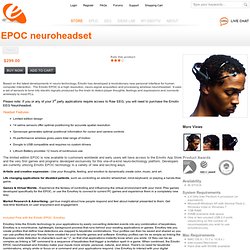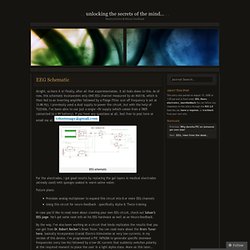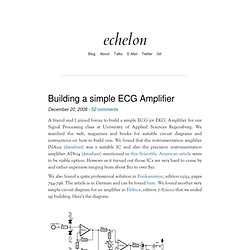

Ondes cérébrales et synchronisation - Mental Waves. Le cerveau a une activité électrique qui dans les différentes zones du cerveau constitué de neurones, l’influx nerveux fonctionne en relative cohérence et de façon rythmique.

Les cellules neuronales s’activent ensemble (plus ou moins), comme une pulsation, puis se calment, puis s’activent de nouveau. De nombreuses études scientifiques sérieuses ont été réalisées pour déterminer la gamme des fréquences et les états mentaux et comportements qui y sont associés. Ces études ont produit des résultats incroyables qui relient les capacités métaphysiques et les fréquences réelles du cerveau.
Les méthodes employées permettant de mesurer les ondes cérébrales sont : l’électro-encéfalogramme, la réceptivité et température de la peau, le battement cardiaque, la tension musculaire, les tests d’attention, les effets sur l’immunité (tests sanguin…), EEG… Le cerveau humain émet des ondes 4 à 45 oscillations par seconde. Les 5 catégories des ondes cérébrales La synchronisation des ondes cérébrales. The home of affordable biofeedback - The Biofeedback Shop. High Resolution EEG. Artistic and creative expression - Use your thoughts, feeling, and emotion to dynamically create color, music, and art.

Life changing applications for disabled patients, such as controlling an electric wheelchair, mind-keyboard, or playing a hands-free game. Games & Virtual Worlds - Experience the fantasy of controlling and influencing the virtual environment with your mind. Play games developed specifically for the EPOC, or use the EmoKey to connect to current PC games and experience them in a completely new way. Market Research & Advertising - get true insight about how people respond and feel about material presented to them. Get real-time feedback on user enjoyment and engagement. Included Free with the Emotiv EPOC: EmoKey EmoKey links the Emotiv technology to your applications by easily converting detected events into any combination of keystrokes.
Unlocking the secrets of the mind... Alright, so here it is!

Finally, after all that experimentation, it all boils down to this. As of now, this schematic incorporates only ONE EEG channel measured by an INA118, which is then fed to an inverting amplifier followed by a Fliege Filter (cut off frequency is set at 33.86 Hz). I previously used a dual supply to power the circuit, but with the help of TLE2426, I’ve been able to use just a single +5V supply (which comes from a 7805 connected to a 9V battery).
If you have any questions at all, feel free to post here or email me at: EEG schematic For the electrodes, I got good results by replacing the gel layers in medical electrodes (already used) with sponges soaked in warm saline water. Future plans: Precision analog multiplexer to expand this circuit into 8 or more EEG channelsUsing this circuit for neuro feedback – specifically Alpha & Theta training In case you’d like to read more about creating your own EEG circuit, check out Solson’s EEG page. Like this: Like Loading... Echelon » Building a simple ECG Amplifier. December 20, 2008 - 52 comments A friend and I joined forces to build a simple ECG (or EKG) Amplifier for our Signal Processing class at University of Applied Sciences Regensburg.

We searched the web, magazines and books for suitable circuit diagrams and instructions on how to build one. We found that the instrumentation amplifier INA121 (datasheet) was a suitable IC and also the precision instrumentation amplifier AD624 (datasheet) mentioned in this Scientific American article seem to be viable option. However as it turned out those ICs are very hard to come by and rather expensive ranging from about $10 to over $50. We also found a quite professional solution in Funkamateur, edition 12/93, pages 794-796. The components cost about 10 Euro. Green red and black cables are connected to the power supply, the thick black cables are connected to the subject and at the bottom there are two pins to connect the oscilloscope probe or an AD-converter.